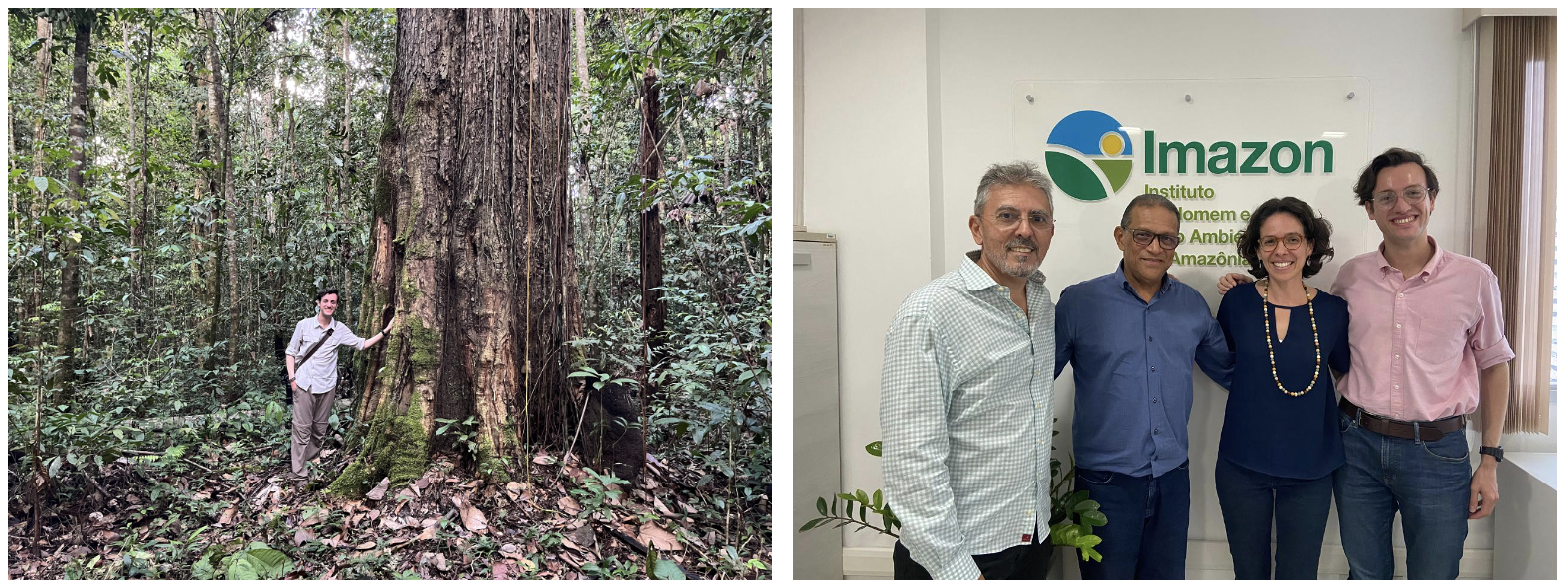A Q&A with Clemente Sanchez, MIT PhD Candidate in Political Science and MIT GOV/LAB Graduate Fellow, about his field research in Brazil.
MIT GOV/LAB is committed to supporting MIT graduate students conducting original field research and data collection on MIT GOV/LAB topics and themes of interest. One way we support students is through our seed grant program that enables students to conduct their research.
We spoke with Clemente Sanchez, a PhD candidate from the Department of Political Science about his experience conducting fieldwork in the Brazilian Amazon. His main research interests revolve around environmental enforcement, bureaucratic politics, and contemporary state building.
MIT GOV/LAB: Can you talk about how you spent this past summer?
I spent most of the summer in the city of Belém, the capital of the Brazilian state of Pará and second biggest city in the Amazon region. I was there working with a local organization called Imazon, which is one of the main non-governmental institutions that monitors deforestation in the Brazilian Amazon. Specifically, I worked with the teams that contribute to the MapBiomas Alerta initiative, as well as the PrevisIA project. MapBiomas Alerta cross-references deforestation events with official permits and enforcement actions in order to keep track of illegal activity that goes unpunished. On the other hand, PrevisIA manages an artificial intelligence model that seeks to predict future patterns of deforestation. With support from these teams, I conducted a series of spatial and statistical analyses to identify broad patterns of where enforcement is taking place, which would allow us to assess its efficiency and effectiveness. In addition to these activities, I also conducted interviews with bureaucrats in federal and state-level environmental agencies in the cities of Belém, Parauapebas, and Macapá to better understand their experience with environmental protection in the region.
MIT GOV/LAB: What drew you to look into these topics in more detail?
In general, the economics literature on deforestation has found that enforcement that prioritizes the most pressing instances of lawbreaking—what we usually call “targeted enforcement” as opposed to a more all-encompassing approach—is a cost-effective approach at curbing deforestation. However, it is less clear to what degree enforcement tends to prioritize these cases to begin with. Therefore, some descriptive patterns of where enforcement is more likely to take place could speak to whether authorities are using their limited resources in an efficient fashion. Thanks to my partnership with Imazon, I found that enforcement usually takes place in the cases that authorities say they prioritize: after large deforestation events, in conservation areas, and areas where there was already a higher deforestation risk. In that sense, the stated policy goals and reality on the ground do not seem to be that far off. Though these were encouraging results, slightly less positive news came from an analysis on the effectiveness of enforcement. It turns out that most areas that are embargoed for engaging in deforestation without proper permits see no secondary growth afterwards, which is concerning.
MIT GOV/LAB: How does this tie in with the rest of your dissertation?
This experience was crucial as a way of familiarizing myself with the main case study of my dissertation. My overarching goal is to understand the “internal” drivers of enforcement in the Brazilian Amazon, as opposed to “external” ones. Research on environmental politics—and the literature on enforcement more broadly—tends to focus on the role of politicians, activists, businesses, and others. However, I think this obscures the role that bureaucrats themselves play; after all, they are the ones responsible for enforcement. In a context shaped by strong civil service protections and relative autonomy from politics, what actors inside the state think will be crucial for shaping enforcement. In line with that, with support from MIT GOV/LAB I was able to interview bureaucrats to understand their experience on the job. I am still working through this material, but these interviews were crucial for getting an initial sense of the challenges that these actors face on their day-to-day.

MIT GOV/LAB: If you had one piece of advice for students planning to do fieldwork what would it be?
My advice would be that while it is important to plan things in advance, a lot of my most insightful interviews happened serendipitously. If you are not having any luck reaching out to people over email or WhatsApp, my advice is to simply show up in person and ask to speak with someone. While this might not fly in more formal settings (I would not attempt this in Brasilia), in other areas people are much more laid back and willing to accommodate foreign researchers. So just show up, and hope for the best!
MIT GOV/LAB: What was your favorite thing about Belém?
If I had to name one thing, I would have to say the food. It is absolutely delicious. I am a huge fan of fried fish in all its forms, but the Pirarucu has become my favorite fish preparation by far. I am also a huge fan of the rest of the regional cuisine, which includes a lot of crab (my favorite preparation was the unha de carangueijo), vatapá (a shrimp stew), and tacacá (a soup that includes shrimp and a local herb called jambú, which leaves your mouth feeling a little numb afterwards). Special mention goes to the traditional way of consuming açaí, which is not as a dessert, but rather as a side dish mixed in with mandioca flour, which complements fried fish perfectly.
Article originally published on mitgovlab.org.
